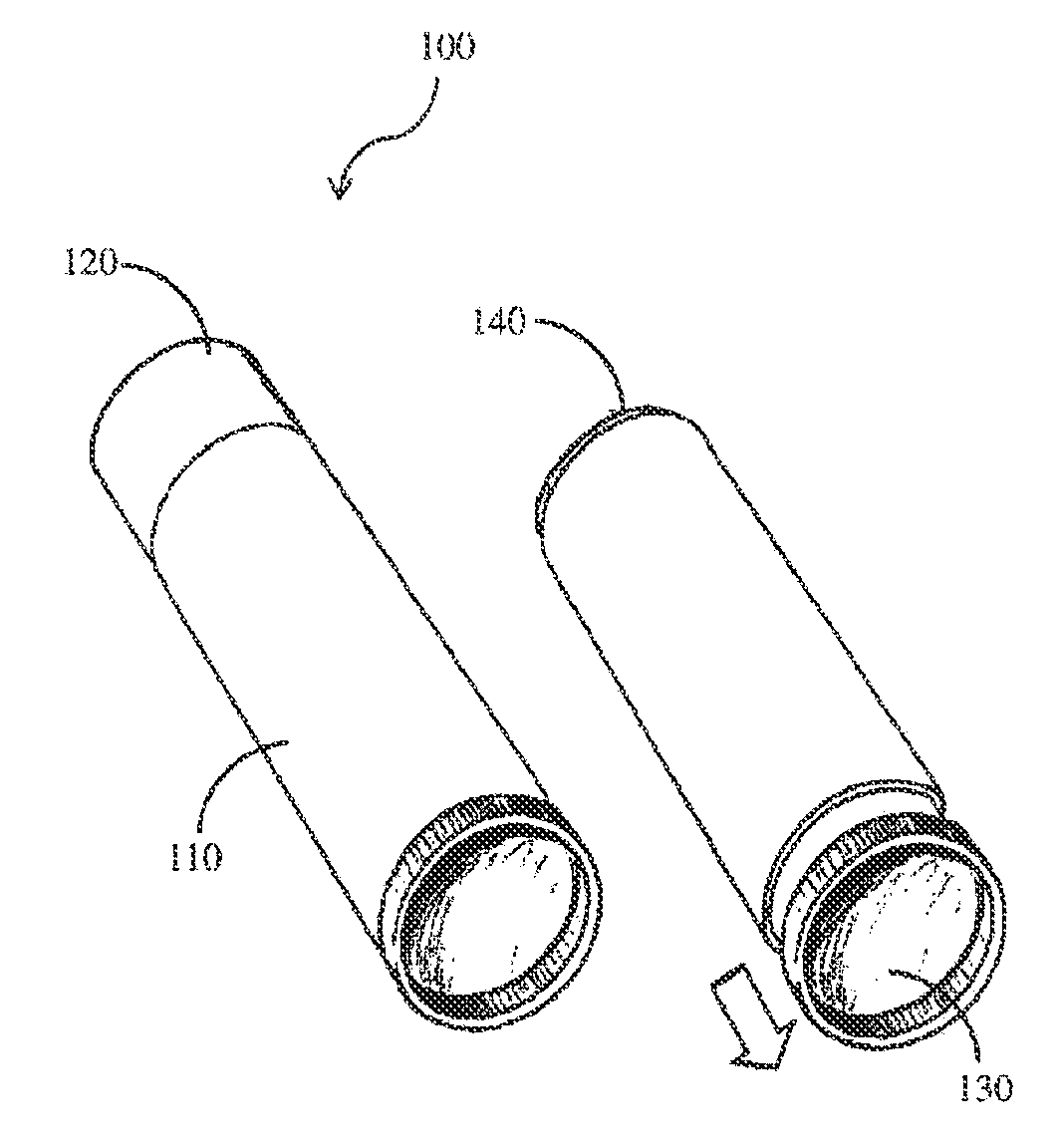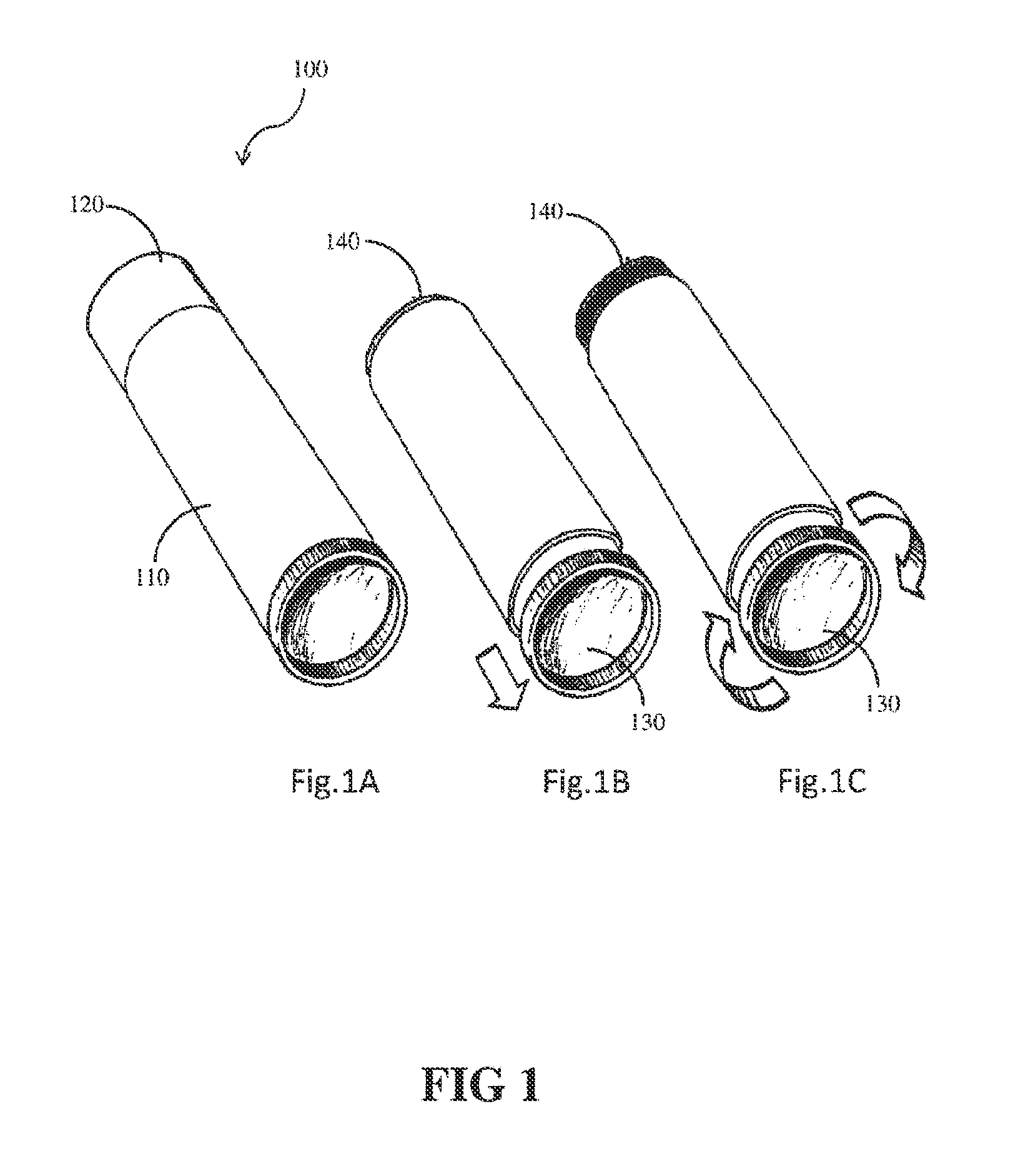Compositions and methods for coating implant surfaces to inhibit surgical infections
a technology of surgical infection and coating, applied in the direction of peptide/protein ingredients, impression caps, packaging goods types, etc., can solve the problems of many deficient approaches, significant morbidity, and inability to successfully treat device-related infections alon
- Summary
- Abstract
- Description
- Claims
- Application Information
AI Technical Summary
Benefits of technology
Problems solved by technology
Method used
Image
Examples
example 1
[0067]0.005 g of rifampin and 0.005 g of minocycline are dissolved in 0.05 g of ethanol to form an antimicrobial mixture. About half of the ethanol is allowed to evaporate to form a concentrated antimicrobial mixture, which is then stirred into 0.1 g of Phosal® 53 MCT (Lipoid Group, Köln, Germany) until a uniform antimicrobial and lecithin mixture is formed. The antimicrobial / lecithin mixture is then folded into 10 g of Phospholipon ® 90G (Lipoid Group, Köln, Germany) until a uniform composition is formed. The final composition contains:
[0068]0.1% each of rifampin and minocycline;
[0069]0.5% ethanol;
[0070]1% of a mixture of 50% phosphatidylcholine and 50% various other lipids; and
[0071]98.4% of a mixture of at least 90% phosphatidyl choline and the remainder a mixture of various other smaller lipids.
example 2
[0072]Formulation “90G” was made consisting entirely of Phospholipon 90G purified soy phosphatidylcholine, with a minimum purity of 94% phosphatidylcholine by weight. The yellowish, waxy solid material is supplied as small clumps. To form the material into a stick-form composition, it was repeatedly ground in a ceramic mortar and pestle that was heated to 40 ° C., then kneaded until solid, and then 4 gram aliquots were cold pressed into a 12 mm diameter cylinder.
example 3
[0073]Formulation “90G90H” was made by grinding together 6 grams of Phospholipon 90G and 3 grams of Phospholipon 90H (Lipoid Group, Köln, Germany). Phospholipon 90H is white powder purified soy derived phosphatidylcholine that is hydrogenated (fully saturated). The Phospholipon 90H was blended with the unsaturated natural phosphatidylcholine, and preheated to 60° C. to soften the hydrogenated form. The two materials were finely ground together in a ceramic mortar and pestle that was heated to 40° C. The mixture was kneaded until a smooth, solid, and cohesive waxy solid was created. Four gram aliquots were cold molded into 12 mm diameter cylindrical sticks.
PUM
| Property | Measurement | Unit |
|---|---|---|
| length | aaaaa | aaaaa |
| diameter | aaaaa | aaaaa |
| temperature | aaaaa | aaaaa |
Abstract
Description
Claims
Application Information
 Login to View More
Login to View More - R&D Engineer
- R&D Manager
- IP Professional
- Industry Leading Data Capabilities
- Powerful AI technology
- Patent DNA Extraction
Browse by: Latest US Patents, China's latest patents, Technical Efficacy Thesaurus, Application Domain, Technology Topic, Popular Technical Reports.
© 2024 PatSnap. All rights reserved.Legal|Privacy policy|Modern Slavery Act Transparency Statement|Sitemap|About US| Contact US: help@patsnap.com










